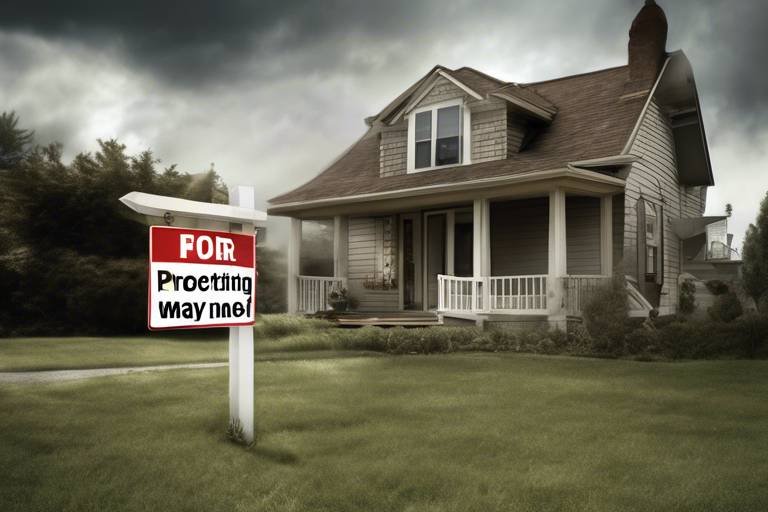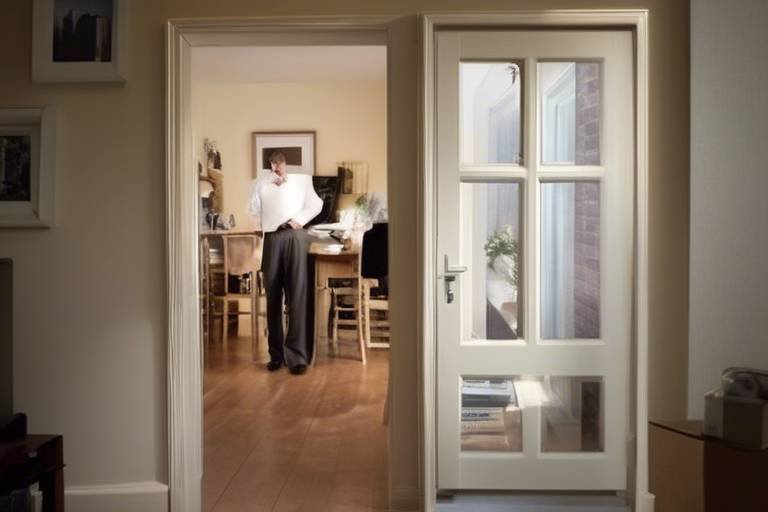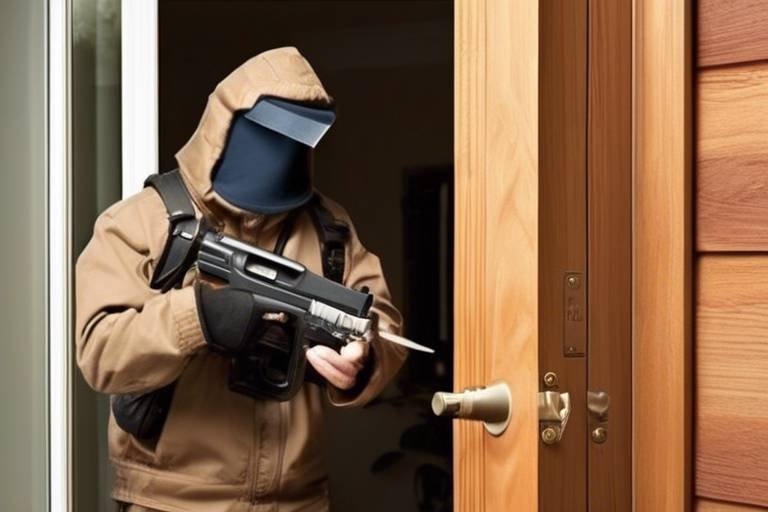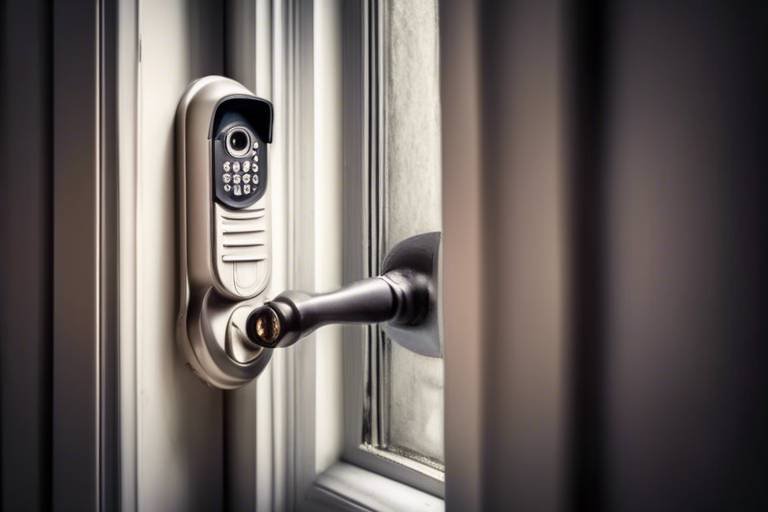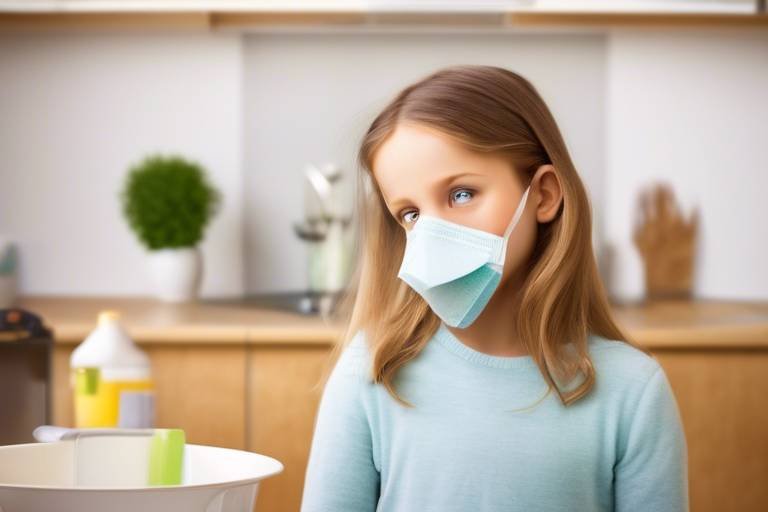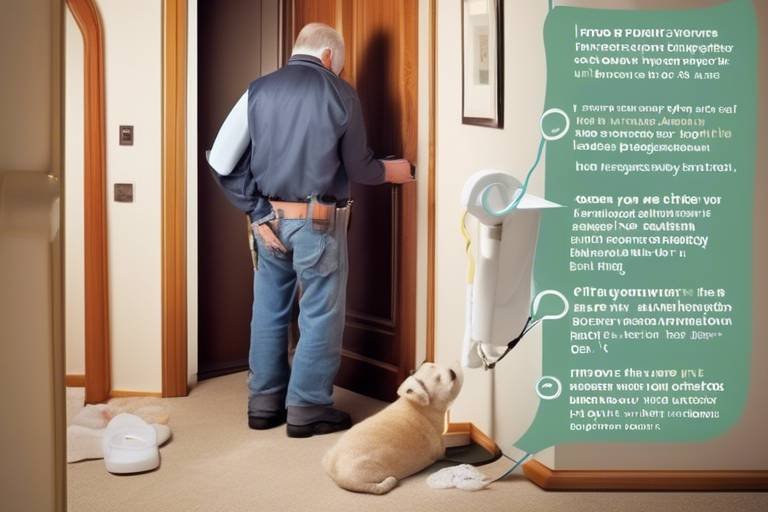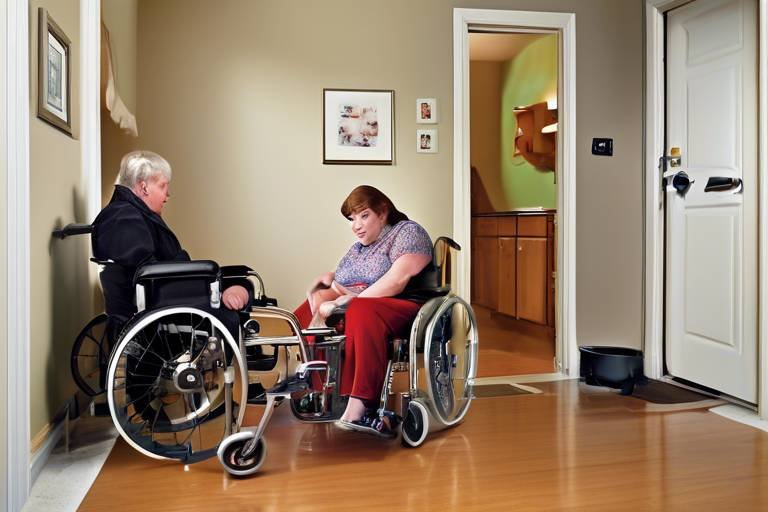The Dangers of Mold in Your Home
Mold is not just an unsightly visitor in your home; it’s a silent invader that can wreak havoc on your health and property. This article explores the various health risks, causes, prevention methods, and remediation techniques related to mold growth in residential spaces. Ignoring mold can lead to serious consequences, making it crucial to address this issue promptly. If you think your home is immune to mold, think again! Mold can thrive in even the most pristine environments, often lurking in places we least expect.
Mold is a type of fungus that thrives in damp environments. It reproduces by releasing tiny spores into the air, which can easily be inhaled or settle onto surfaces. There are many types of mold, but not all are harmful. Common types found in homes include Aspergillus, Penicillium, and Stachybotrys (commonly known as black mold). Mold loves to hide in dark, damp places such as:
- Basements
- Bathrooms
- Under sinks
- Behind walls
Understanding where mold is likely to grow can help you keep an eye out for it. Remember, mold doesn’t need a lot to survive—just moisture and a food source, which is often organic materials like wood, drywall, or even dust.
Exposure to mold can lead to a variety of health issues, especially for sensitive individuals. People with asthma, allergies, or weakened immune systems are particularly at risk. Common health problems linked to mold exposure include:
- Respiratory issues such as coughing, wheezing, and difficulty breathing
- Allergic reactions like sneezing, runny nose, and skin rashes
- More severe conditions such as chronic sinusitis and lung infections
For some, even a small amount of mold can trigger serious reactions. It's essential to recognize these risks and take action to protect your health and the health of your loved ones.
Mold thrives in specific conditions, and understanding these can help you prevent its growth. The typical causes of mold growth in homes include:
- Moisture: Leaky roofs, plumbing issues, or high humidity levels can create the perfect breeding ground for mold.
- Poor ventilation: Areas that lack proper airflow, such as attics or basements, are more prone to mold growth.
- Structural issues: Cracks in walls or foundations can allow moisture to seep in, providing an ideal environment for mold.
By addressing these issues, you can significantly reduce the likelihood of mold taking hold in your home.
Identifying mold early can prevent extensive damage and health risks. Key signs of mold infestation include:
- Visible growth on walls, ceilings, or floors
- A persistent musty odor that lingers in the air
- Health symptoms such as sneezing, coughing, or skin irritation
If you notice any of these signs, don’t ignore them! Early detection is crucial in preventing further complications.
Prevention is key when it comes to combating mold. Here are some practical tips to help keep your home mold-free:
- Keep humidity levels below 50% using dehumidifiers and air conditioners.
- Ensure proper ventilation in areas like bathrooms and kitchens.
- Fix leaks and water damage promptly to prevent moisture accumulation.
By taking these steps, you can create a healthier indoor environment for you and your family.
Once mold is detected, timely remediation is essential. Effective mold removal techniques include:
- DIY methods for small infestations, such as using vinegar or baking soda.
- When to seek professional help, especially for large areas or toxic mold types.
Remember, improper removal can lead to mold returning, so it’s crucial to follow best practices.
Indoor air quality significantly affects health and well-being. Mold can release spores and mycotoxins into the air, leading to poor air quality. To improve your indoor environment, consider:
- Regularly cleaning and maintaining your HVAC system.
- Using air purifiers with HEPA filters to trap mold spores.
By prioritizing indoor air quality, you can promote healthier living spaces for everyone in your home.
Mold can lead to serious legal and financial consequences for homeowners. Potential liabilities may arise if mold causes health problems for tenants or guests. Additionally, insurance coverage for mold damage can vary widely. It’s essential to address mold issues promptly to avoid costly repercussions, both financially and legally.
Q: How can I tell if I have mold in my home?
A: Look for visible growth, musty odors, and any unexplained health symptoms.
Q: Can I remove mold myself?
A: Small infestations can often be handled with DIY methods, but larger issues may require professional help.
Q: How can I prevent mold from returning?
A: Maintain low humidity levels, fix leaks quickly, and ensure proper ventilation throughout your home.

Understanding Mold
Mold is a type of fungus that plays a critical role in the ecosystem by breaking down organic matter. However, when it comes to our homes, mold can be a real nuisance and a health hazard. It thrives in damp environments, making bathrooms, basements, and kitchens prime locations for its growth. Mold spores are ubiquitous; they float around in the air, waiting for the right conditions to settle and multiply. But what exactly makes mold so concerning, and why should we care?
There are various types of mold, with some being more hazardous than others. The most common types found in homes include:
- Aspergillus: Often found in homes, it can cause respiratory issues.
- Cladosporium: Typically found on fabrics and wood, this type can trigger allergies.
- Stachybotrys chartarum: Known as black mold, it can produce mycotoxins that are harmful to health.
Understanding where mold is likely to grow can help you take preventive measures. Mold usually appears in places where moisture accumulates. Think about the areas in your home that are often humid or damp:
- Under sinks
- In the corners of bathrooms
- Behind walls where plumbing leaks may occur
- In damp basements or crawl spaces
These environments provide the perfect breeding ground for mold spores. When moisture levels are high, and there’s a lack of ventilation, mold can grow rapidly, often going unnoticed until it becomes a significant problem. It's essential to recognize that mold doesn't just appear overnight; it requires specific conditions to flourish. If you’ve ever noticed a musty smell in your home, it’s a strong indicator that mold may be present, even if you can’t see it.
Moreover, mold can reproduce quickly through spores that are released into the air, which can then be inhaled or land on surfaces. This is why mold is not just an aesthetic issue; it can lead to serious health risks. The biological characteristics of mold allow it to survive in diverse environments, making it a persistent threat in many households. Understanding these factors is the first step toward protecting your home and health.

Health Risks Associated with Mold
Mold is not just an unsightly nuisance; it can be a serious health hazard lurking in the corners of your home. When mold spores are inhaled or come into contact with your skin, they can trigger a variety of health issues. For many people, especially those with pre-existing conditions, the effects can be quite severe. It's essential to understand the potential health risks associated with mold exposure to take proactive measures in your home.
One of the most common health issues linked to mold is respiratory problems. Individuals exposed to mold may experience symptoms similar to those of allergies or asthma, such as:
- Coughing
- Wheezing
- Shortness of breath
- Throat irritation
These symptoms can be particularly pronounced in children, the elderly, and those with weakened immune systems. In fact, studies have shown that children living in homes with high mold levels are more likely to develop respiratory infections and asthma. Isn't it alarming to think that the air we breathe inside our homes could be affecting our loved ones' health?
Moreover, mold can also provoke allergic reactions in sensitive individuals. Symptoms can range from mild to severe and may include:
- Skin rashes
- Nasal congestion
- Eye irritation
For those who suffer from mold allergies, even a tiny amount of mold can trigger significant reactions, leading to discomfort and a decline in overall quality of life. It’s like having an unwelcome guest that just won’t leave!
Beyond allergies and respiratory issues, mold exposure has been linked to more serious health conditions, including:
| Health Condition | Description |
|---|---|
| Chronic Sinusitis | A prolonged inflammation of the sinuses that can be exacerbated by mold exposure. |
| Neurological Issues | Some studies suggest that certain types of mold may lead to cognitive issues and memory loss. |
| Immune System Suppression | Long-term exposure can compromise the immune system, making individuals more susceptible to infections. |
It's crucial to recognize that mold doesn't just affect those with allergies or respiratory issues. Even healthy individuals can experience symptoms when exposed to mold for extended periods. This underscores the importance of maintaining a mold-free environment, as the risks are not limited to a specific group of people.
If you suspect mold in your home, it's advisable to address the situation promptly. Ignoring the problem can lead to serious health implications and create an environment where mold thrives. Remember, your home should be a sanctuary, not a source of health risks!
Q: Can mold exposure cause long-term health problems?
A: Yes, prolonged exposure to mold can lead to chronic respiratory issues and other health complications, especially in vulnerable populations.
Q: How can I tell if I have mold in my home?
A: Look for visible signs of mold, such as discoloration on walls or ceilings, and pay attention to musty odors. If you experience unexplained health symptoms, it may also indicate mold presence.
Q: Is it safe to remove mold myself?
A: Small areas of mold can often be cleaned safely with proper precautions. However, for larger infestations, it’s best to consult a professional to ensure thorough remediation.

Common Causes of Mold Growth
Mold is a persistent and often unwelcome guest in many homes, and understanding its common causes is the first step in tackling this issue head-on. Mold thrives in damp and humid environments, making certain areas of your home particularly vulnerable. But what exactly creates the perfect breeding ground for these pesky fungi? Let’s dive into the primary culprits that lead to mold growth.
One of the most significant contributors to mold development is moisture. This can come from various sources, including:
- Leaky roofs and plumbing
- High humidity levels, especially in bathrooms and kitchens
- Flooding or water damage from storms
- Condensation on windows and walls
These sources of moisture create an ideal environment for mold spores to settle and multiply. For instance, if you’ve ever noticed that your bathroom mirror fogs up after a hot shower, you’ve witnessed condensation in action—an enemy of mold prevention!
Another critical factor is poor ventilation. Homes that lack adequate airflow can trap moisture indoors, leading to stagnant air that promotes mold growth. Areas like attics, basements, and crawl spaces are often the worst offenders, as they tend to be less ventilated. Installing vents or using exhaust fans can significantly reduce moisture levels and help keep the air circulating.
Structural issues also play a vital role in mold proliferation. Cracks in walls, gaps around windows, and improperly sealed doors can allow water to seep in, creating a moist environment. If you live in an older home, it might be time to inspect these areas closely. A small crack can lead to a big problem if left unchecked!
Additionally, poor insulation can contribute to mold growth. Insufficient insulation can lead to temperature fluctuations, causing condensation to form on cold surfaces. This is particularly common in attics and exterior walls, where the temperature differences can be quite pronounced. Proper insulation not only helps with energy efficiency but also plays a crucial role in mold prevention.
Lastly, let’s not forget about organic materials. Mold feeds on organic matter, and common household items like wood, paper, and even dust can provide a feast for these fungi. Keeping your home clean and free from dust and debris is essential in reducing the likelihood of mold taking hold.
In summary, the common causes of mold growth can be traced back to moisture, poor ventilation, structural issues, inadequate insulation, and organic materials. By addressing these factors, homeowners can significantly reduce the risk of mold infestations in their living spaces. Remember, the key to a mold-free home is vigilance and proactive maintenance!
- What are the signs of mold growth? Look for visible mold, musty odors, and unexplained health issues.
- Can I remove mold myself? Small areas of mold can often be cleaned with proper precautions, but extensive infestations should be handled by professionals.
- How can I prevent mold? Control moisture levels, improve ventilation, and keep your home clean.

Signs of Mold Infestation
Identifying mold infestation in your home can be a bit like playing a game of hide and seek—sometimes, it’s right in front of you, and other times, it lurks in the shadows, waiting to wreak havoc. The key to keeping your living space safe is knowing the signs to watch for. Mold loves to grow in damp, dark places, and unfortunately, many homeowners may not realize they have a problem until it’s too late.
One of the most obvious signs of mold is the presence of visible growth. Mold can appear in various colors, including black, green, white, or even orange, and can take on different textures, from fuzzy to slimy. If you notice any suspicious spots on your walls, ceilings, or even furniture, it’s time to investigate further. Remember, if you see mold, there’s a good chance there’s more lurking out of sight!
Another telltale sign is a musty odor. Mold has a distinct smell that can permeate your home, often described as damp or earthy. If you notice an unpleasant odor that seems to come from a specific area, it could be a sign that mold is growing nearby, even if you can’t see it. Trust your nose; it’s often more reliable than your eyes when it comes to detecting mold.
In addition to visual cues and odors, keep an eye out for health symptoms among your family members. Mold exposure can lead to a variety of respiratory issues, especially for those with allergies or asthma. If you or your loved ones start experiencing unexplained sneezing, coughing, or skin irritations, it might be time to check for mold. Sometimes, these symptoms can worsen when you’re at home and improve when you’re away, which is a significant indicator of a mold issue.
Furthermore, consider the environment of your home. If you live in an area with high humidity or have recently experienced water damage, your home is at a higher risk for mold growth. Inspect areas like bathrooms, basements, and kitchens, where moisture tends to accumulate. If you notice condensation on windows or walls, that’s another red flag.
To summarize, here are some key signs that you might have a mold infestation:
- Visible mold growth on surfaces
- Musty odors that linger in certain areas
- Health symptoms such as sneezing, coughing, or skin irritations
- High humidity levels or recent water damage
- Condensation on windows or walls
If you notice any of these signs, don’t ignore them! The sooner you address a potential mold problem, the less damage it can cause to your home and health. Remember, mold is not just an unsightly nuisance; it can lead to serious health issues and structural damage if left untreated. So, keep your eyes peeled and your nose alert—your home’s safety may depend on it!
Q: How can I tell if the mold in my home is dangerous?
A: While all mold should be addressed, some types can be more harmful than others. If you see mold and have health concerns, it’s best to consult a professional for identification and remediation.
Q: Can I remove mold myself?
A: Small areas of mold can often be cleaned with soap and water or a mixture of vinegar and water. However, for larger infestations or if you have health issues, it’s advisable to seek professional help.
Q: What should I do if I find mold?
A: First, identify and address the source of moisture. Then, clean the affected area or hire a professional for remediation. Always wear protective gear when dealing with mold.

Preventing Mold in Your Home
When it comes to keeping your home safe from the clutches of mold, prevention is your best ally. Think of mold like an unwanted guest who sneaks in through the cracks when you're not looking. The good news? There are several proactive steps you can take to ensure that this pesky fungus doesn't make itself at home in your living space. By understanding the conditions that promote mold growth and taking action to mitigate them, you can create a healthier environment for you and your family.
First and foremost, controlling moisture is key. Mold thrives in damp conditions, so keeping your home dry is essential. Regularly check areas prone to moisture, such as bathrooms, kitchens, and basements. You might want to invest in a dehumidifier, especially during humid months, to keep moisture levels in check. Ideally, indoor humidity should be kept below 60% to inhibit mold growth.
Ventilation plays a crucial role in mold prevention as well. Ensure that your home is well-ventilated to allow air to circulate freely. This can be as simple as opening windows or using exhaust fans in areas that generate moisture, like the bathroom and kitchen. Proper ventilation helps to reduce humidity levels and prevents the buildup of damp air, which is a mold's best friend.
Another important aspect is to regularly inspect your plumbing. Leaky pipes or faucets can create a perfect environment for mold to flourish. If you notice any leaks, address them immediately to prevent water from accumulating. It's also wise to check your roof for any signs of leaks, as water intrusion from above can lead to serious mold issues.
When it comes to cleaning and maintenance, don't overlook the importance of using mold-resistant products. For example, consider using mold-resistant drywall and paints in areas prone to moisture. These materials are designed to resist mold growth, providing an additional layer of protection for your home.
Lastly, remember to keep an eye on your belongings. Items that are stored in damp areas, like basements or attics, can become breeding grounds for mold. If you're storing items that are prone to moisture, such as cardboard boxes, consider using plastic bins instead. This simple switch can make a huge difference in preventing mold from taking root in your personal belongings.
In summary, preventing mold in your home requires a combination of moisture control, proper ventilation, routine inspections, and mindful cleaning practices. By taking these steps, you can significantly reduce the risk of mold growth and create a healthier living environment for you and your loved ones. After all, a mold-free home is a happy home!
- What humidity level is considered safe to prevent mold? Aim for indoor humidity levels below 60% to inhibit mold growth.
- How often should I check for leaks in my plumbing? It's wise to check your plumbing regularly, at least once a month, to catch any leaks early.
- Can I use regular paint in damp areas? It's better to use mold-resistant paints in areas prone to moisture, such as bathrooms and kitchens.
- What should I do if I find mold in my home? For small infestations, you can clean it with a mixture of water and detergent. For larger issues, consider hiring a professional mold remediation service.

Mold Remediation Techniques
Mold remediation is a crucial process that needs to be approached with seriousness and care. Once you discover mold in your home, it’s essential to act quickly to prevent further damage and health risks. The first step in effective remediation is to identify the extent of the mold growth. This can often be done visually, but in some cases, it might require professional assessment, especially for hidden mold within walls or under flooring. Once you have a clear picture of the situation, you can choose the best remediation method.
For small areas of mold (generally less than 10 square feet), homeowners can often handle the cleanup themselves. Start by wearing protective gear, including gloves, goggles, and a mask to avoid inhaling spores. Use a mixture of water and detergent to scrub the mold off hard surfaces. For stubborn mold, a solution of water and vinegar or a commercial mold remover can be effective. However, it’s important to note that while these methods can be effective for minor infestations, they may not be sufficient for larger problems.
In cases where mold has penetrated porous materials like drywall or carpet, removal and replacement of those materials may be necessary. This is because mold can establish roots in these materials, making it difficult to fully eradicate. Additionally, it’s essential to address the source of moisture that allowed the mold to thrive in the first place. Without eliminating the moisture, mold is likely to return, creating a never-ending cycle of remediation.
For larger infestations, or if you’re dealing with toxic mold types like black mold (Stachybotrys chartarum), it’s wise to call in professionals. These experts have the training and equipment to safely remove the mold and prevent it from spreading. They typically follow a systematic approach, which includes:
- Assessment: Identifying the type and extent of mold.
- Containment: Preventing spores from spreading to unaffected areas.
- Filtration: Using air scrubbers to remove spores from the air.
- Removal: Safely removing contaminated materials.
- Cleaning: Disinfecting the area to prevent future growth.
- Restoration: Repairing or replacing any damaged structures.
After the remediation process, it’s vital to conduct a follow-up inspection to ensure that the mold has been completely removed and that the environment is safe. This might include air quality testing or visual inspections. Remember, mold remediation isn’t just about getting rid of the visible mold; it’s also about restoring a healthy environment for you and your family.
In addition to immediate remediation efforts, consider implementing long-term strategies to prevent mold from returning. This includes maintaining proper ventilation in your home, using dehumidifiers in damp areas, and regularly checking for leaks or water damage. By being proactive, you can significantly reduce the likelihood of mold becoming a recurring issue.
Q: How long does mold remediation take?
A: The duration of mold remediation can vary significantly based on the extent of the infestation. Small areas may take a few hours, while larger infestations can take several days.
Q: Can I stay in my home during mold remediation?
A: It depends on the severity of the mold problem. For minor issues, you may be able to stay, but for larger infestations, it’s often recommended to vacate until the process is complete.
Q: Will my insurance cover mold remediation?
A: Coverage can vary by policy. It’s best to check with your insurance provider to understand what is covered regarding mold damage and remediation.
Q: Can I prevent mold from coming back?
A: Yes! By controlling humidity levels, ensuring proper ventilation, and addressing leaks promptly, you can greatly reduce the chances of mold returning.

The Importance of Indoor Air Quality
When it comes to our homes, we often focus on aesthetics, functionality, and even energy efficiency. However, one critical aspect that frequently flies under the radar is indoor air quality (IAQ). Think about it: we spend a significant portion of our lives indoors, so why wouldn’t we prioritize the air we breathe? Poor indoor air quality can lead to a host of health problems, and mold is one of the primary culprits. It's like having a hidden enemy lurking in your walls, waiting to pounce on your well-being.
To put it simply, indoor air quality refers to the air quality within and around buildings and structures, especially as it relates to the health and comfort of the occupants. Factors such as mold, dust, pet dander, and volatile organic compounds (VOCs) can severely degrade IAQ. Mold, in particular, is notorious for releasing spores and mycotoxins into the air, which can trigger a variety of health issues. Imagine inhaling tiny, invisible invaders every time you take a breath—yikes!
The impact of mold on indoor air quality is profound. Exposure to mold spores can lead to respiratory problems, including asthma and chronic bronchitis, especially in individuals with pre-existing conditions or weakened immune systems. In fact, studies have shown that children exposed to mold are at a higher risk of developing respiratory illnesses. This is why maintaining good indoor air quality is not just a matter of comfort; it’s a matter of health.
So, how can we ensure that the air in our homes is as clean as possible? Here are some effective strategies:
- Regular Cleaning: Dust and vacuum your home regularly to minimize allergens.
- Control Humidity: Keep indoor humidity levels between 30% and 50% to prevent mold growth.
- Ventilation: Ensure proper ventilation in areas prone to moisture, like bathrooms and kitchens.
- Air Purifiers: Consider using HEPA air purifiers to trap mold spores and other pollutants.
By implementing these strategies, you can significantly improve your home's indoor air quality. Remember, it’s not just about avoiding unpleasant odors or visible mold growth; it’s about creating a safe and healthy environment for you and your loved ones. Think of your home as a fortress: if the air inside is compromised, the whole structure is at risk.
In conclusion, the importance of indoor air quality cannot be overstated. Mold and other pollutants can wreak havoc on your health, so taking proactive steps to improve IAQ is essential. By being vigilant and making a conscious effort to maintain a clean, dry, and well-ventilated home, you can breathe easier knowing that you are safeguarding your health and well-being.
Q: What are the signs of poor indoor air quality?
A: Signs can include persistent musty odors, visible mold growth, increased allergy symptoms, and respiratory issues.
Q: How can I test my home's air quality?
A: You can use DIY air quality test kits available in stores or hire professionals for a comprehensive assessment.
Q: What is the best way to remove mold from my home?
A: For small areas, you can use a mixture of water and vinegar. For larger infestations, it’s advisable to seek professional help.
Q: How often should I check for mold in my home?
A: Regular checks, especially in moisture-prone areas, should be conducted at least every six months.

Legal and Financial Implications of Mold
The presence of mold in your home can lead to a myriad of legal and financial implications that every homeowner should be aware of. First and foremost, mold can significantly impact property value. If you decide to sell your home, potential buyers may be deterred by the prospect of mold issues, leading to a decrease in offers or even failed sales. Imagine putting your house on the market, only to discover that a hidden mold problem could cost you thousands in lost equity. This is why addressing mold issues promptly is not just a matter of health, but also one of financial prudence.
Moreover, homeowners can face legal liabilities if someone is harmed due to mold exposure. For instance, if a tenant experiences health problems linked to mold, they may have grounds to sue for damages. This could lead to costly legal battles, not to mention the potential for significant medical expenses that could arise from mold-related health issues. It's essential to understand that the law often places the responsibility of maintaining a safe living environment squarely on the shoulders of the property owner. Therefore, failing to address mold can result in serious legal consequences.
Insurance coverage is another critical aspect to consider. Many homeowners assume that their insurance will cover mold damage, but this is not always the case. Most policies have specific exclusions or limitations regarding mold, especially if it is due to neglect or failure to maintain the property. For example, if mold develops because of a long-standing leak that you ignored, your insurance company may deny your claim. This could leave you footing the bill for costly remediation and repairs. To avoid such scenarios, it's vital to read your policy thoroughly and consult with your insurance agent about mold coverage.
In addition to the direct costs associated with remediation and potential legal fees, there are also indirect financial impacts to consider. For instance, if mold is present, you may need to invest in additional air quality assessments or ongoing monitoring to ensure that your home remains safe. Furthermore, the psychological toll of knowing that your home harbors mold can lead to stress and anxiety, which can affect your overall well-being and productivity. The financial implications of mold can ripple through various aspects of your life, making it imperative to take mold issues seriously.
In summary, the legal and financial implications of mold are significant and can have lasting effects on homeowners. From decreased property value to potential lawsuits and insurance complications, the risks are numerous. Therefore, it is crucial to address any mold issues as soon as they are identified. Taking proactive steps not only protects your health but also your financial future.
- Can I sue my landlord for mold exposure?
Yes, if you are a tenant and your landlord fails to address a mold problem that affects your health, you may have grounds for a lawsuit. - Will my homeowner's insurance cover mold damage?
This depends on your policy. Many policies have exclusions for mold, so it's essential to check with your insurance provider. - How can I prevent legal issues related to mold?
Regular maintenance, prompt repairs, and thorough inspections can help you avoid mold growth and potential legal issues.
Frequently Asked Questions
- What is mold and why is it dangerous?
Mold is a type of fungus that thrives in damp environments. It poses significant health risks, especially for individuals with allergies or respiratory issues. Mold can cause symptoms like sneezing, coughing, and even more severe respiratory problems if left unchecked.
- How can I tell if I have mold in my home?
Common signs of mold infestation include visible growth on surfaces, a musty odor, and health symptoms like headaches or respiratory issues. If you notice any of these signs, it’s crucial to investigate further to prevent potential health risks.
- What causes mold to grow in homes?
Mold thrives in damp conditions, so sources of moisture like leaks, high humidity, and poor ventilation can create an ideal environment for mold growth. Structural issues, such as cracks in walls or roofs, can also contribute to moisture accumulation.
- How can I prevent mold growth in my home?
To prevent mold, keep humidity levels low, fix leaks promptly, and ensure proper ventilation in areas like bathrooms and kitchens. Using dehumidifiers and regularly cleaning surfaces can also help maintain a mold-free environment.
- What should I do if I find mold in my home?
If you discover mold, it’s important to address it quickly. For small areas, you might be able to clean it yourself using soap and water or a vinegar solution. However, for larger infestations, it’s best to seek professional help to ensure thorough remediation.
- Can mold affect my indoor air quality?
Absolutely! Mold can release spores and mycotoxins into the air, which can degrade indoor air quality and lead to health issues. Improving ventilation and maintaining cleanliness can help enhance air quality and reduce mold growth.
- Are there legal implications of having mold in my home?
Yes, mold can lead to legal and financial consequences. Homeowners may face liability issues if mold affects tenants or guests. Additionally, insurance policies might not cover mold damage if it’s not reported promptly, leading to costly repairs.






